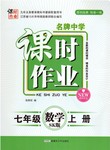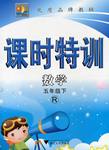
| |||||||||||||||||||||||||||||||||||||||||||||||||||||||||||
 课课练江苏系列答案
课课练江苏系列答案 名牌中学课时作业系列答案
名牌中学课时作业系列答案 明天教育课时特训系列答案
明天教育课时特训系列答案 浙江新课程三维目标测评课时特训系列答案
浙江新课程三维目标测评课时特训系列答案科目:高中英语 来源:英语教研室 题型:050
阅读理解
In the 1970s, with ever-increasing international travel and tourism, the United States Department of Transportation decided to design a set of symbols(符号)for airports, stations, and public facilities(设施). The aim was to design symbols that would be clear to people in a hurry and to those who can not read English. Therefore, the set of symbols shown below was designed. Then the designers planned an experiment with an international sample(抽样调查) of 8-year-old children from Sweden. Japan, France, Canada, and Britain. The purpose of the experiment was to determine how clear the symbols would be to the children, who were not experienced international travelers.

The children were shown the set of sample symbols, and were then asked to explain to the experimenters what the symbols meant. The researchers thought that if the international sample of children could understand them, the grown-up travelers would probably also recognize their meanings. The following graph(图表) shows the percentages of correctly explained symbols.

The experiments discovered that most of the children easily understand the telephone receiver and cigarette symbols. However, there were some interesting differences in their answers to the other four symbols. The Japanese children most easily understood the symbol standing for“coffee shop”. The experimenters thought that this fact showed children in Japan are more familiar with such shops than children in Sweden and Canada. The Japanese, French, and Canadian children all equally recognized the idea of“information”showed by the question mark.
Interestingly, the French and Canadian children understood the symbol referring to“campground(露营地)”better than the other children. Again, the researchers thought that recognition of a symbol shows how common the activity is in a country.
One particularly difficult symbol was that of the umbrella and glove used for“lost and found”, which was correctly explained by less than 50% of the children in four of the five countries. On the basis(基础) of this finding, the experimenters decided to add a question mark to make this symbol easier to understand.
1.Which of the following shows the correct meaning of(X), (Y), and (Z) in the graph above?
[ ]
A.Campground, Coffee Shop, Lost and Found.
B.Lost and Found, Campground, Coffee Shop.
C.Coffee shop, Lost and Found, Campground.
D.Telephone, No smoking, Information.
2.If we compare the Japanese and French children's understanding of the question mark and cigarette symbols, then we can find a difference of _____ between these symbols.
[ ]
A.0% B.10%
C.80% D.90%
3.The _____ symbol was the most difficult for the Japanese children to understand.
[ ]
A.cup B.question mark
C.tent D.umbrella and glove
4.Which of the following statements is TRUE?
[ ]
A.The experimenters thought Japanese children drink coffee.
B.The most difficult symbol was changed to make it clearer.
C.The question mark symbol is the least difficult in all five countries.
D.The researchers thought children would know as much as grown-ups.
查看答案和解析>>
科目:高中英语 来源:福建示范性高中2007年高三年级3月质量检测、英语 题型:050
| |||||||||||||||||||||||||||||||||||||||||||||||||||||||||||
查看答案和解析>>
科目:高中英语 来源:四川省雅安市2010届高三下学期第三次诊断性考试英语 题型:阅读理解
第二部分 阅读理解(共两节,满分50分)
第一节 阅读下面短文,从每题所给的四个选项(A、B、C和D)中,选出最佳选项,并在答题卡上将该项涂黑。(共20小题;每小题2分,满分40分)
A
The Erie Canal was the first important national waterway built in the US. It crossed New York from Buffalo on Lake Erie Troy to Albany on the Hudson River. It joined the Great Lakes with the Atlantic Ocean. The canal served as a route over which industrial goods could flow into the west, and materials could pour into the east. The Erie Canal helped New York develop into the nation's largest city.
The building of the canal was paid for entirely by the state of New York. It cost $ 7,143,789, but it soon gained its price many times over. Between 1825, when the canal was opened, and 1882, when toll charges(过运河费)were stopped, the state collected $ 121,461,891.


For a hundred years before the Erie was built, people had been talking about a canal which could join the Great Lakes and the Atlantic Ocean. The man who planned the Erie Canal and carried the plan through was De Witt Clinton. Those who were against the canal laughingly called it "Clinton's Ditch(沟)". Clinton talked and wrote about the canal and drew up plans for it. He and Governor Morris went to Washington in 1812 to ask for help for the canal, but they were unsuccessful.
Clinton became governor of New York in 1817, and shortly afterwards, on July 4,1817, broke ground for the canal in Rome, N.Y. The first part of the canal was completed in 1820. As the canal grew, towns along its course developed fast. The length of the canal is 363 miles.
41.We can see that the Erie Canal______
A.joined the Great Lakes together
B.crossed New York Lakes together
C.played an important part in developing New York City
D.was the first waterway built in the US
42.It can be inferred that______into the Atlantic Ocean.
A.the Great Lakes flow B.the Hudson River flows
C.Lake Erie flows D.the Erie Canal flows
43.Which of the following is TRUE according to the passage?
A.The Erie Canal brought profits of over $ 114,000,000.
B.It's 363 miles from the Great Lakes to the Atlantic Ocean.
C.The West was more advanced than the East when the canal was built.
D.Many other states helped New York build the canal.
44.We can learn from the passage that______.
A.Clinton broke ground for the canal at both ends
B.Clinton started building the canal before he became governor
C.all parts of the canal were completed at the same time
D.construction of the canal took eight years
查看答案和解析>>
科目:高中英语 来源: 题型:阅读理解
三、阅读理解(共两节,40分)
第一节(共15小题;每小题2分,共30分)
阅读下列短文,从每题所给的四个选项A、B、C、D)中,选出最佳选项,并在答题卡上将该项涂黑。
When you go to St.Petersburg, the number of attractions can seem large.If you are short of time, or just want to make sure to hit the highlights, these are the top must-see sights in St. Petersburg.
1.The Hermitage Museum
The Hermitage Museum is one of the most important sights to see for any visitor to St. Petersburg. There are lots of different paintings by the old masters in the Hermitage. Prepare to come face-to-face with classie Western artists.
2. Kizhi Island
Kizhi Island is an open-air museum of wooden architecture from the Karelia Region of Russia. These impressive structures are made entirely without nails - the wood fits together with joints and grooves(沟槽).
3. Peterhof
Peterhof is as beautiful as it is fun. You’ll be charged for admission, but go to Petethof when the fountaions are working—during the day in the summer. They are shut off in winter evenings.
4. The Church of Our Savior on the Spilt Blood
Love it or hate it, the Church of Our Savior on the Spilt Blood in St. Petersburg is an enthralling must-see sight. The beautiful look may make y our eyes brighten, and the painting sinside the church will make you say “Wow!”
5. The Bronze Horseman Statue
The so-called Bronze Horseman is a part of Russian culture and a symbol of St. Petersburg. Made famous by Alexander Pushkin, this statue of Peter the Great sitting on his horse can truly show Peter the Great’s influence on the Russian idce of greatness.
51.If you are interested in pairtings, you’d better go to .
A.Peterhof and Kizhi Island
B.the Hcrmitagee Museum and Peterhof
C.Kizhi lsland and the Church of Our Savior on the Spilt Blood
D.the hermitage Museum and the Church of Our Savior on the Spilt Blood
52.We can learn from the passage that .
A.visitors can visit Peterhof for free
B.the buildings of Kizhi Island are made of wood
C.the fountains in Peterhof can be seen all year round
D.the largest collection of Russian arts is in the Hermitage Museum
53.The main purpose of the passage is to .
A.show the wonderful history of Russia
B.persuade artists to study St. Petersburg
C.recommend the famous buildings in Russia
D.introduce the must-see sights in St. Petersburg
54.The underlined phrase (in Para 1) “hit the highlights” means .
A.to save more time B.to learn more knowledge
C.to go to the high buildings D.to visit the most interesting sights
查看答案和解析>>
科目:高中英语 来源:同步题 题型:阅读理解
查看答案和解析>>
湖北省互联网违法和不良信息举报平台 | 网上有害信息举报专区 | 电信诈骗举报专区 | 涉历史虚无主义有害信息举报专区 | 涉企侵权举报专区
违法和不良信息举报电话:027-86699610 举报邮箱:58377363@163.com